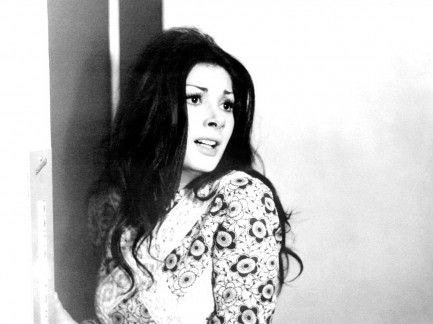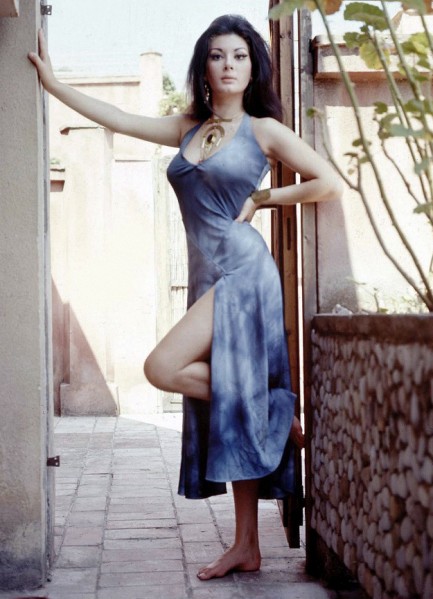| Vintage Pulp | Jan 27 2024 |

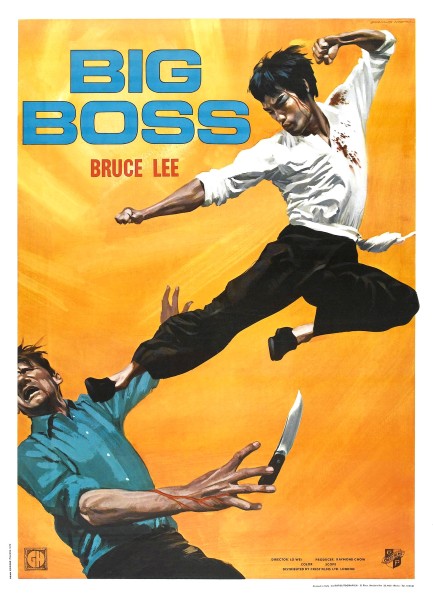
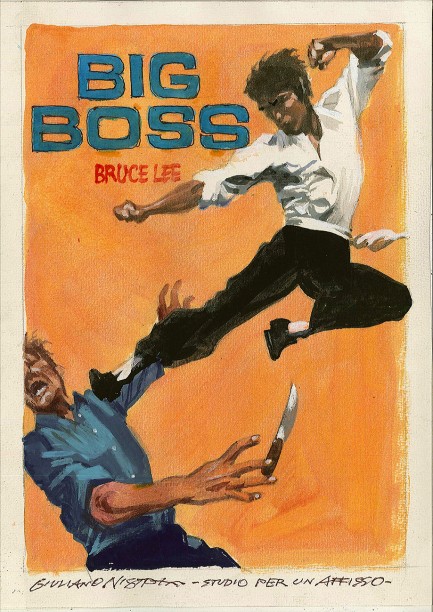
A while back we shared two Italian posters for the Hong Kong action flick Tang shan da xiong, aka The Big Boss. Those were painted by Averado Ciriello, and one of them, with star Bruce Lee depicted as moving so fast he had seven blurry arms, brought to mind those moments in The Matrix when Neo and Mr. Smith fight at mindbending speed. We're looking today at more art from the movie. The above efforts—a finished poster and a preliminary study—were painted by Italian artist Giuliano Nistri for the film's British release by Crest Films. We included the study because we wanted to highlight a website that you should visit, where you can see more of the same and gain a greater appreciation for Nistri's work. It's at this link. Tang shan da xiong premiered in England today in 1971.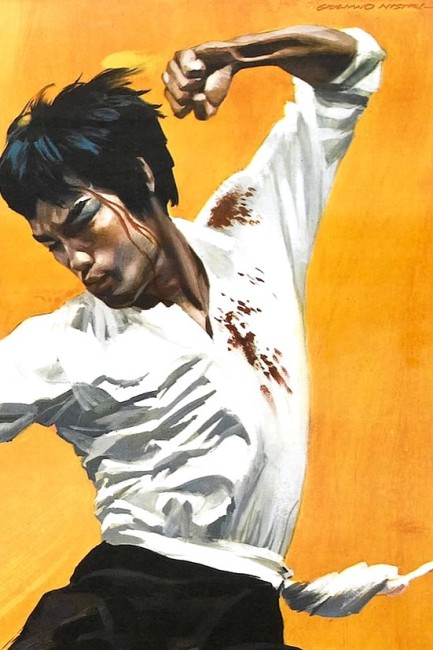
| Vintage Pulp | Sep 28 2018 |

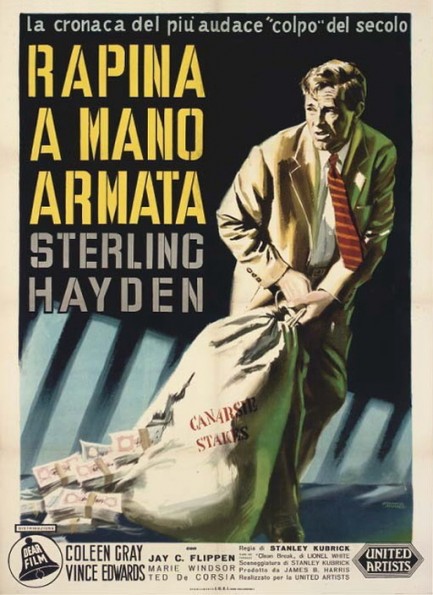
| Vintage Pulp | Dec 23 2016 |

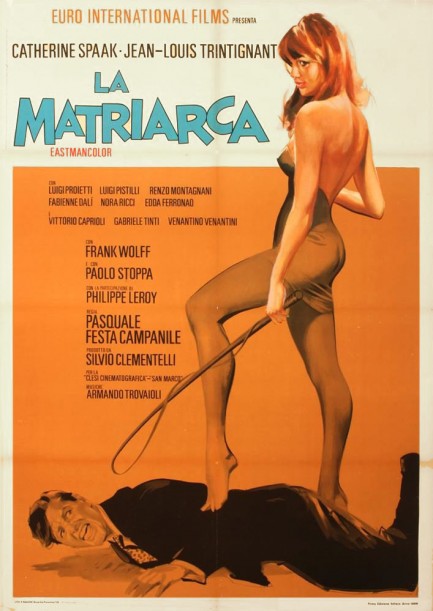
This is a really nice poster for the Italian sex comedy La matriarca. We watched it on Daily Motion, and Catherine Spaak plays a young widow who discovers her dearly departed kept a secret apartment reserved for his serial philandering. Wondering if her lack of sexual experience contributed to her husband's wanderings, and spurred to curiosity about various carnal practices, she proceeds to seduce pretty much everyone she knows, absorbing lessons along the way. She becomes particularly fixated on the wisdom of Aristotle, which leads to her comically using men as horses (see below). We're mainly interested in the poster, though, which is unsigned, but was painted by Giuliano Nistri, a conclusion we came to because he painted the alternate Italian promo which you see below, and because it's very similar to another Nistri poster you can see here. La matriarca premiered in Italy today in 1968. If you get the urge to watch it, try this link.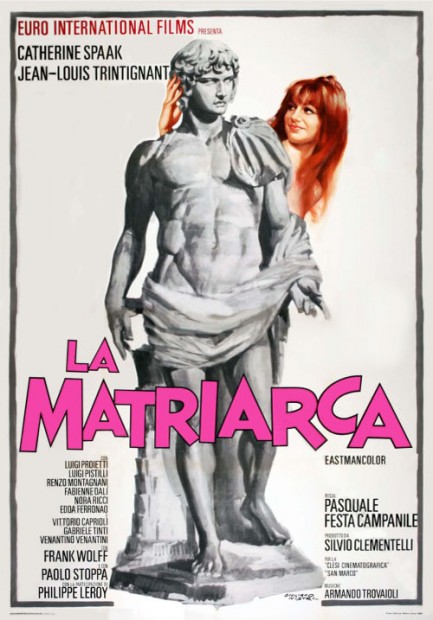
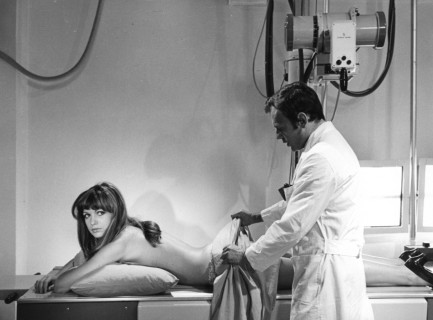
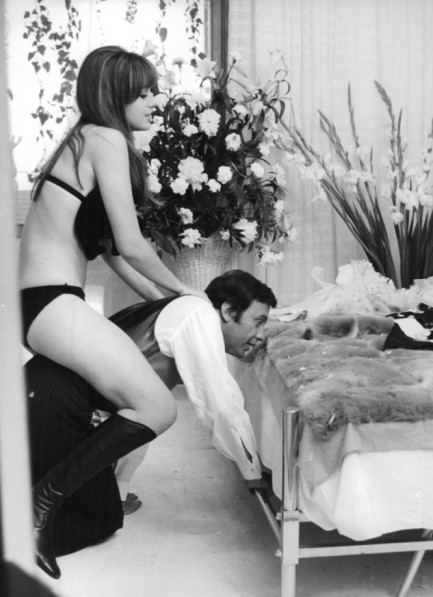
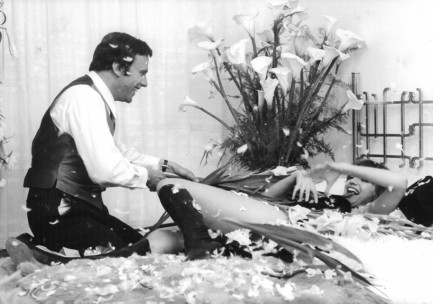

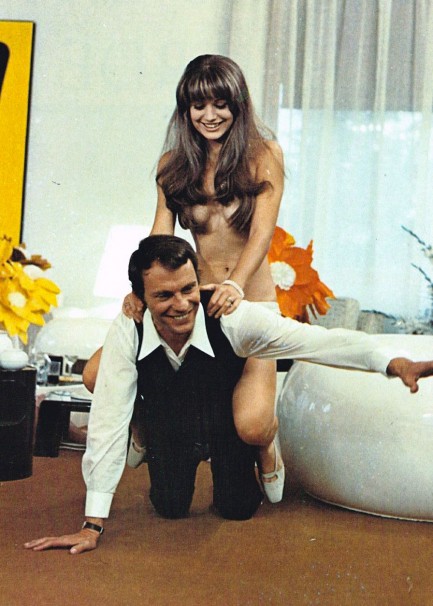
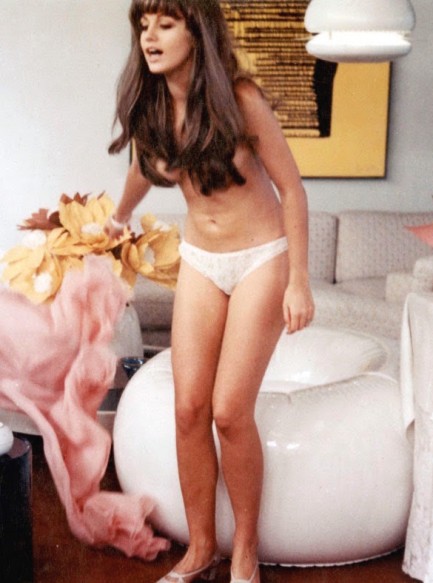
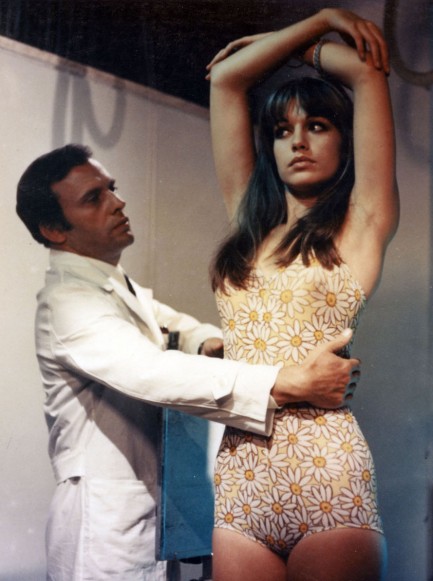
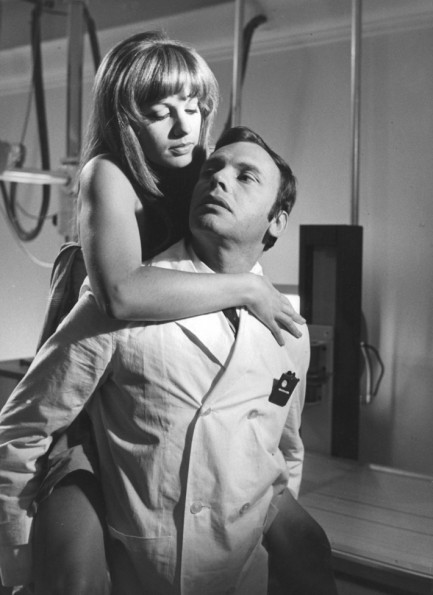
| Vintage Pulp | May 31 2015 |

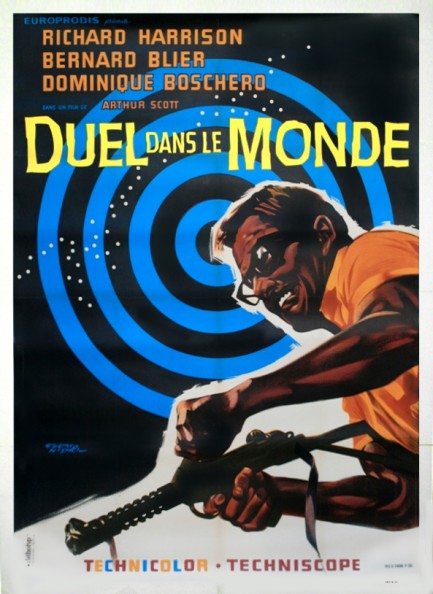
It’s probably fair to say Duello dans le monde, aka Ring Around the World has been pretty much forgotten in filmdom, but maybe it shouldn’t be. With a good premise, groovy-jazzy soundtrack, and location shooting in global hotspots like Bangkok, London, Hong Kong, and Rio de Janeiro, this was better than we had any right to expect. Richard Harrison investigates a series of seemingly natural deaths only to find that they were murders—in reality an assassin has shot the victims with pellets made of a frozen concoction that induces heart attacks. The pellets of course then melt and leave no trace behind.
| Vintage Pulp | Feb 20 2013 |

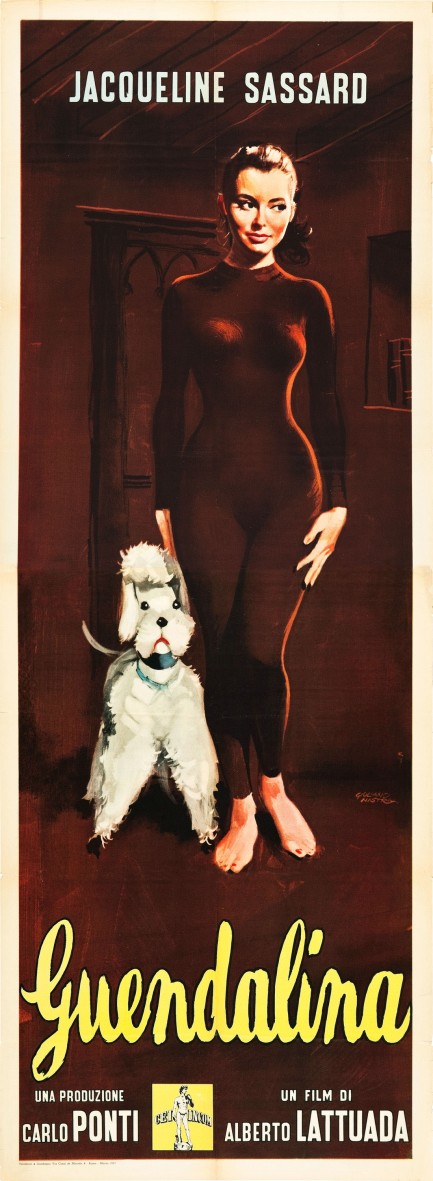
As you may have noticed, of late we’re very high on Italian illustrators. We’ve shown you some of the best here, here, and here. Today we wanted to share this Giuliano Nistri effort for Alberto Lattuada’s 1957 romantic comedy Guendalina. The poster’s inspiration is a famous scene in which star Jacqueline Sassard dances in full body tights for co-star Raf Mattioli. You may notice that Nistri seems to have expended considerable skill getting his representation of Sassard to be lifelike, but considerably less on the creepy, dead-eyed poodle next to her. That’s because the poodle isn’t real. In the film, it’s a stuffed animal, and he got it exactly right. Guendalina premiered in Italy today in 1957. 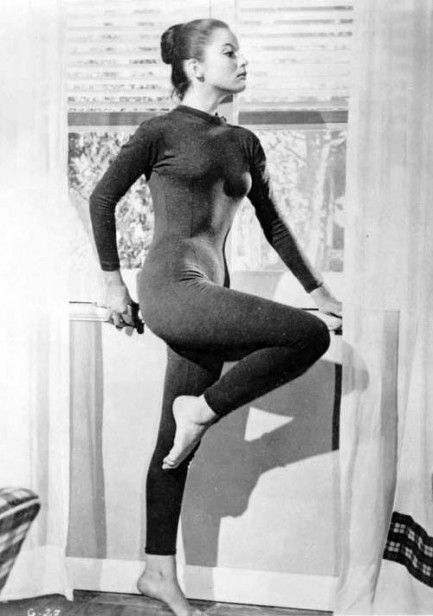
| Vintage Pulp | Jan 15 2013 |

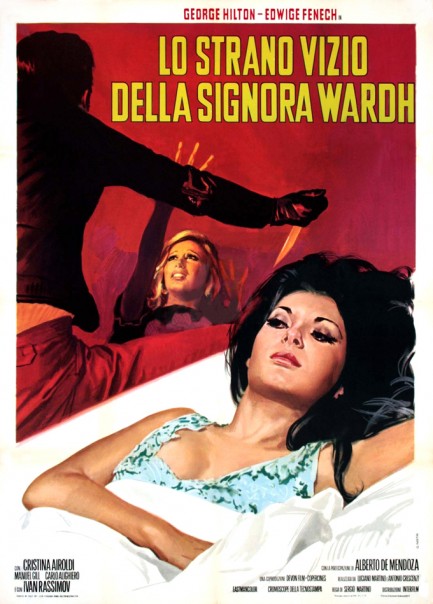
So, quite by coincidence there’s another movie we watched recently that also premiered today, though thirty years later than The Shanghai Gesture (see below). The movie is Lo strano vizio della Signora Wardh, which would translate as “The Strange Vice of Mrs. Wardh,” but was released in the U.S. as Blade of the Ripper. This flick is considered one of the best gialli ever made, and it’s tough to argue the point. It’s intricate, absorbing, unpredictable, colorful, and shot in an array of amazing external locations and inside one of the greatest mid-century modern apartments ever conceived. It also has Edwige Fenech, whose gifts are well known. Taking place mainly in Vienna and climaxing in Sitges, Spain (which happens to be one of our favorite towns in Europe)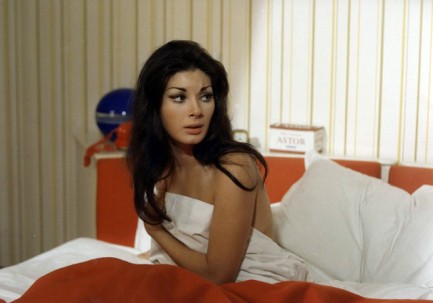


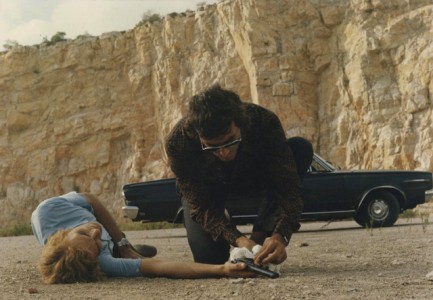 Signora Wardh is a tale of obssession and infidelity wrapped in a murder mystery. Mrs. Wardh does indeed have a strange vice, but that’s just window dressing. It’s her that’s being hunted throughout the movie—either by a serial killer, a demented ex-lover, or both. Or neither. They say that the only way to keep a secret is if no more than two people know it and one of them is dead. But the only way to commit murder is if the killer has an iron clad alibi, and for that he often needs help. Rule one conflicts with rule two, and that’s the fun of Signora Wardh. Above you see a rare and wonderful Italian promo poster painted by Giuliano Nistri, the younger brother of equally talented Enzo Nistri. We'll get back to both Nistri brothers a little later. Lo strano vizio della Signora Wardh opened in Italy today in 1971.
Signora Wardh is a tale of obssession and infidelity wrapped in a murder mystery. Mrs. Wardh does indeed have a strange vice, but that’s just window dressing. It’s her that’s being hunted throughout the movie—either by a serial killer, a demented ex-lover, or both. Or neither. They say that the only way to keep a secret is if no more than two people know it and one of them is dead. But the only way to commit murder is if the killer has an iron clad alibi, and for that he often needs help. Rule one conflicts with rule two, and that’s the fun of Signora Wardh. Above you see a rare and wonderful Italian promo poster painted by Giuliano Nistri, the younger brother of equally talented Enzo Nistri. We'll get back to both Nistri brothers a little later. Lo strano vizio della Signora Wardh opened in Italy today in 1971. 